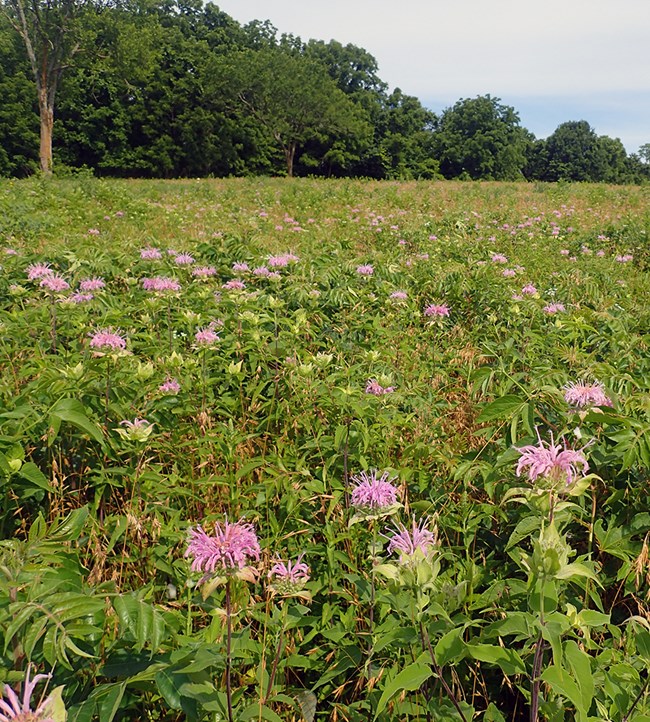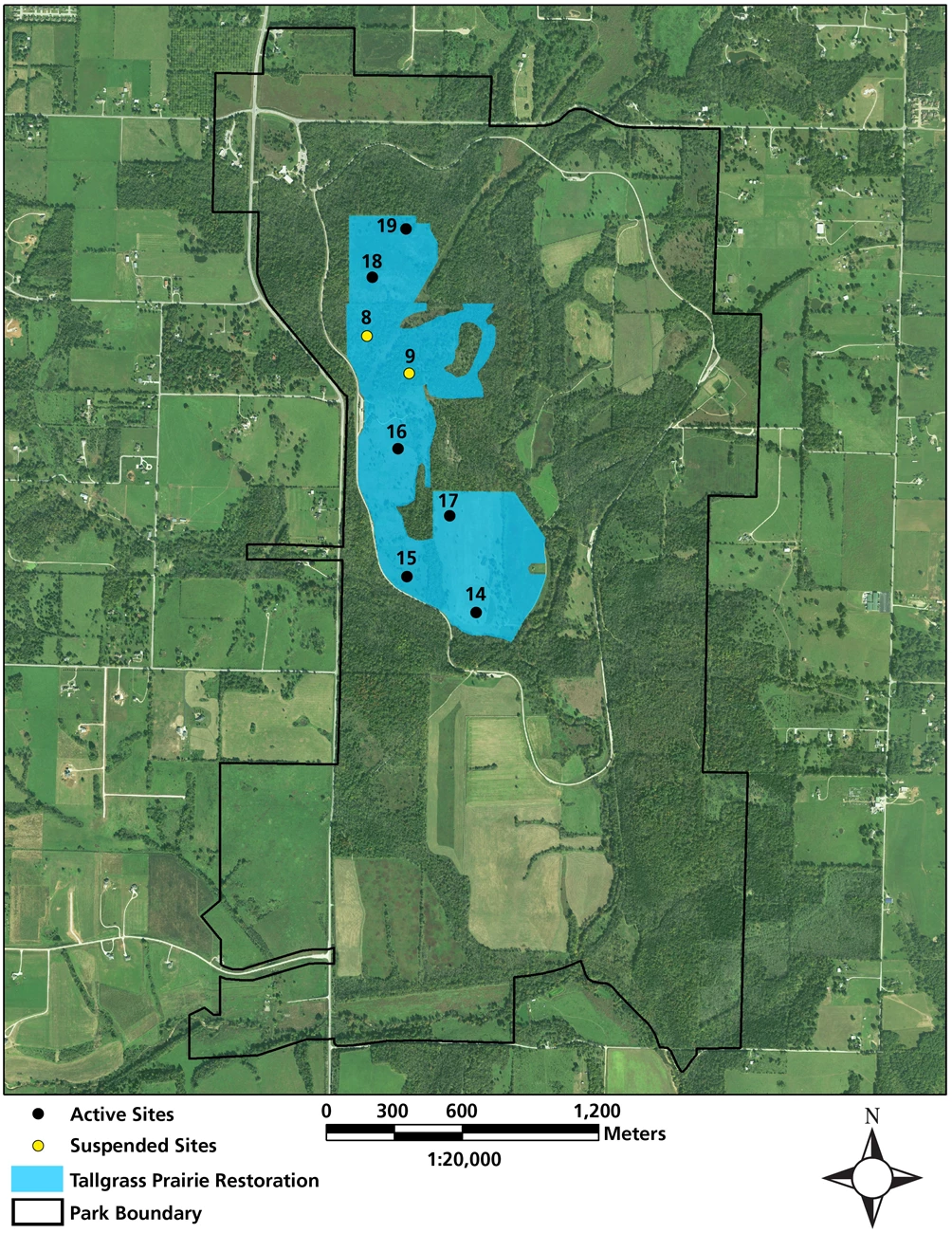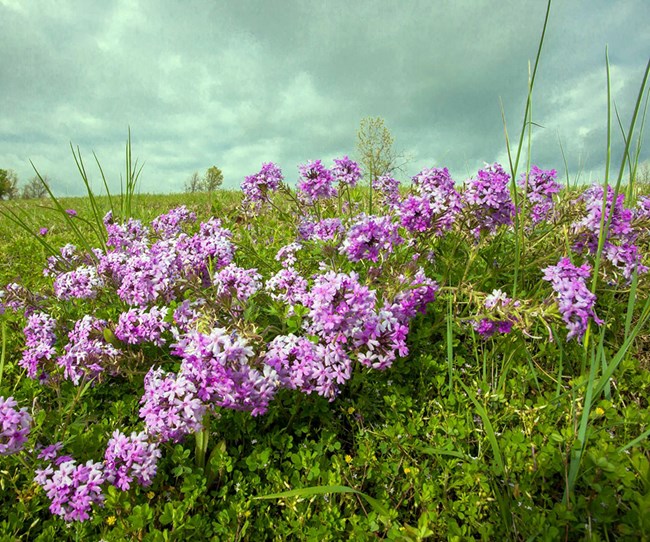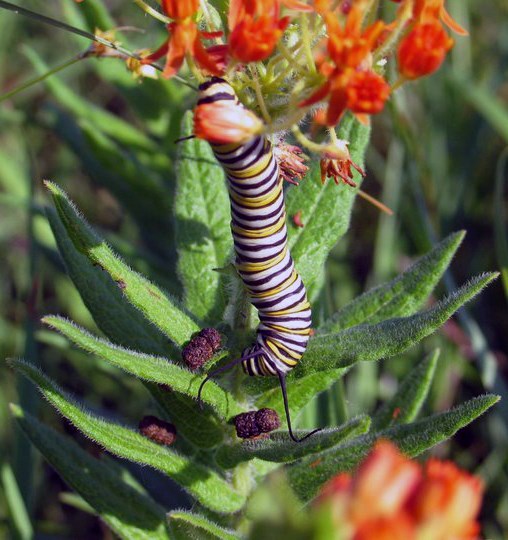Last updated: April 19, 2022
Article
Prairie Plant Community Monitoring at Wilson's Creek National Battlefield

NPS
Park Prairies
Wilson’s Creek National Battlefield (NB) commemorates the 1861 Civil War battle for the control of Missouri. The vegetation present at the time of the battle impacted the battle strategy and outcomes. As a result, restoring battlefield conditions has been an important focus for staff since the park was established. The park contains a mix of woodlands, prairies, and glades because it is located in the transition zone between the Osage Plains and the woodlands of the Ozarks. At the time of the battle, the area was primarily savannas and grasslands with some open woodlands and several farms with cropland and grazing. Fire maintained the open prairie landscapes, but long-term fire suppression changed the ecosystems over time.
Wilson's Creek NB began replanting the prairies in the late 1970s and continued until 1993. Prescribed fires were introduced in 1988 and the park uses fire, cutting, and mowing to maintain open woodlands, remove invasive species, and promote healthy prairies and native species diversity. The Heartland Inventory and Monitoring (I&M) Network monitors the park's prairies to undertand how they may be changing over time.
What Do We Monitor?
The Heartland I&M Network has monitored the plants in the park prairies since 1988. Six permanent monitoring plots were established in 2008 and were monitored in 2008, 2012, 2016, and 2020 (sites 14 through 19 on the map below). We collect information on climate, fire history, how many plant species are present, how much ground area each species covers (a measure called plant cover that is an estimate of abundance), how much of the ground is covered by plant material or rocks, and how many trees, tree seedlings, and saplings are growing in the prairie. These measurements allow us to assess the current condition of the prairies and to track them over time so the park can evaluate how well their management actions are working to maintain an open and diverse prairie ecosystem.

NPS

NPS
Prairie Plants 2008–2020
Wilson's Creek NB had mostly normal to above normal rainfall during the monitoring period, but drought conditions were present in 2012 and there were dry periods in 2016. While prairies are adapted to drought, we found fewer plant plant species in dry years.The park's prairie plant community remains moderately diverse despite recent increases in tree seedlings and saplings. Nonnative forbs have declined over time but nonnative grasses have increased.
Limiting woody plant growth is important for sustaining prairies. Four of the six monitoring sites are more like shrubland than tallgrass prairie and a fifth site is a shrubland-savanna community. Prescribed fire frequency on the park has decreased over time and prairie communities are now largely maintained by mowing and herbicide treatments. An increase in fire frequency, continued nonnative plant treatments, and reducing woody species will help stop the transition from prairie to savannah and woodland communities at the park.

NPS
Did You Know?
Milkweeds are critical plants for pollinators, especially the monarch butterfly, which is a candidate for listing under the Endangered Species Act. Prairies play an important role as pollinator habitat, including providing conditions that allow milkweeds to grow. At Wilson's Creek National Battlefield, management of the prairies for pollinators and their host plants is ecologically critical and it helps maintain the historical scene at the time of the battle. We have found five milkweed species on the park prairie monitoring sites since 2008. While milkweeds are not abundant on the park, they were found on all six sites in wet years and on two to three sites in dry years. Maintaining the prairie by applying fire, mowing, and herbicide treatments outside of pollinator breeding times and the blooming season will help provide needed habitat for imperiled pollinators such as the monarch butterfly.
For More Information
View the Full Report.Visit the Heartland Inventory & Monitoring Network website.
